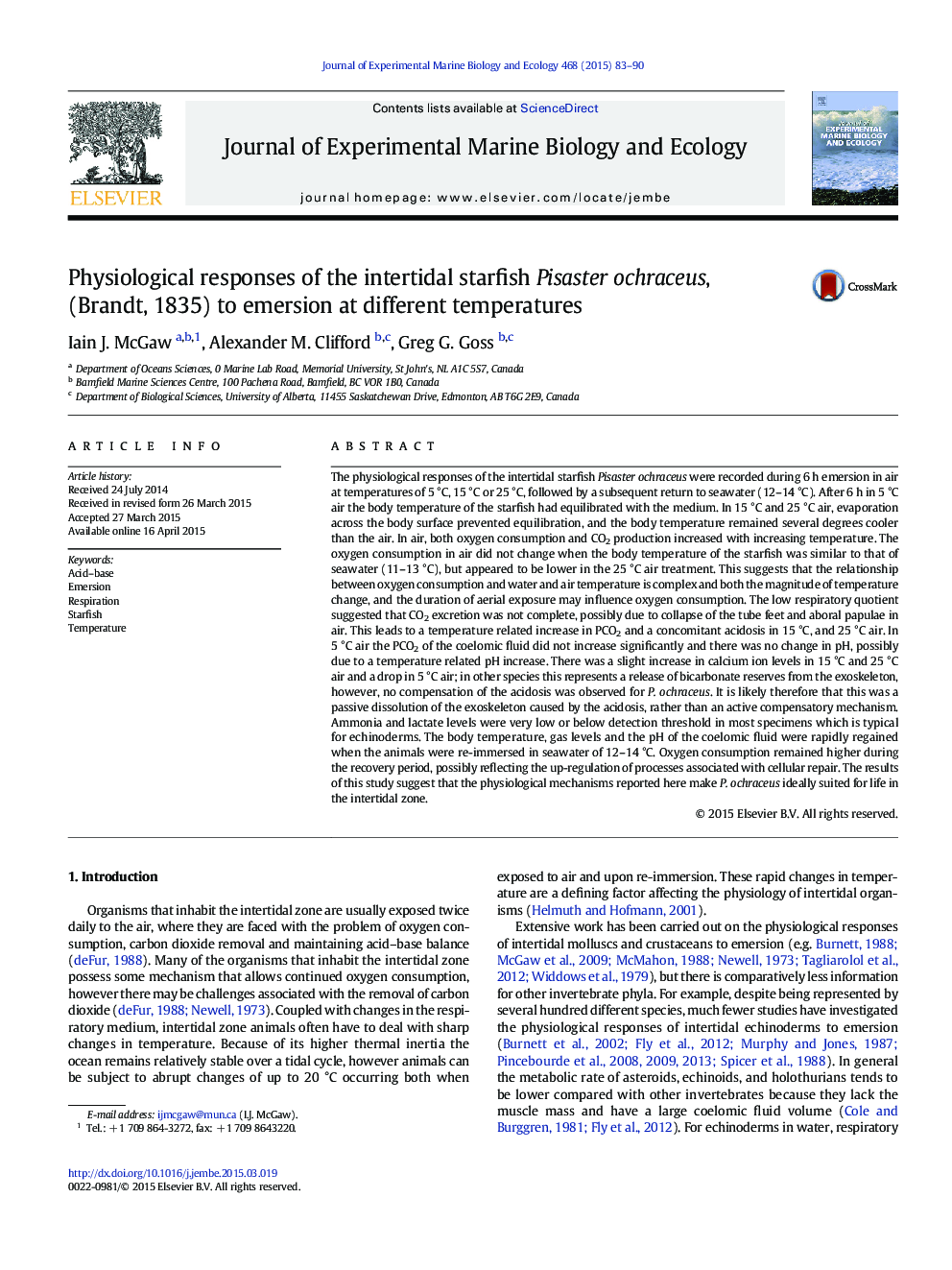| کد مقاله | کد نشریه | سال انتشار | مقاله انگلیسی | نسخه تمام متن |
|---|---|---|---|---|
| 4395403 | 1618407 | 2015 | 8 صفحه PDF | دانلود رایگان |

• The body temperature of Pisaster ochraceus did not equilibrate in air of 15 and 25 °C
• Oxygen uptake was dependent on the temperature of the air and the time the animals were emersed.
• Aerial exposure to high temperature resulted in changes in PO2, pH and PCO2 of the coelomic fluid.
• Physiological variables recovered relatively rapidly when the starfish were returned to seawater.
• Pisaster ochraceus is not living close to its physiological tolerance threshold.
The physiological responses of the intertidal starfish Pisaster ochraceus were recorded during 6 h emersion in air at temperatures of 5 °C, 15 °C or 25 °C, followed by a subsequent return to seawater (12–14 °C). After 6 h in 5 °C air the body temperature of the starfish had equilibrated with the medium. In 15 °C and 25 °C air, evaporation across the body surface prevented equilibration, and the body temperature remained several degrees cooler than the air. In air, both oxygen consumption and CO2 production increased with increasing temperature. The oxygen consumption in air did not change when the body temperature of the starfish was similar to that of seawater (11–13 °C), but appeared to be lower in the 25 °C air treatment. This suggests that the relationship between oxygen consumption and water and air temperature is complex and both the magnitude of temperature change, and the duration of aerial exposure may influence oxygen consumption. The low respiratory quotient suggested that CO2 excretion was not complete, possibly due to collapse of the tube feet and aboral papulae in air. This leads to a temperature related increase in PCO2 and a concomitant acidosis in 15 °C, and 25 °C air. In 5 °C air the PCO2 of the coelomic fluid did not increase significantly and there was no change in pH, possibly due to a temperature related pH increase. There was a slight increase in calcium ion levels in 15 °C and 25 °C air and a drop in 5 °C air; in other species this represents a release of bicarbonate reserves from the exoskeleton, however, no compensation of the acidosis was observed for P. ochraceus. It is likely therefore that this was a passive dissolution of the exoskeleton caused by the acidosis, rather than an active compensatory mechanism. Ammonia and lactate levels were very low or below detection threshold in most specimens which is typical for echinoderms. The body temperature, gas levels and the pH of the coelomic fluid were rapidly regained when the animals were re-immersed in seawater of 12–14 °C. Oxygen consumption remained higher during the recovery period, possibly reflecting the up-regulation of processes associated with cellular repair. The results of this study suggest that the physiological mechanisms reported here make P. ochraceus ideally suited for life in the intertidal zone.
Journal: Journal of Experimental Marine Biology and Ecology - Volume 468, July 2015, Pages 83–90